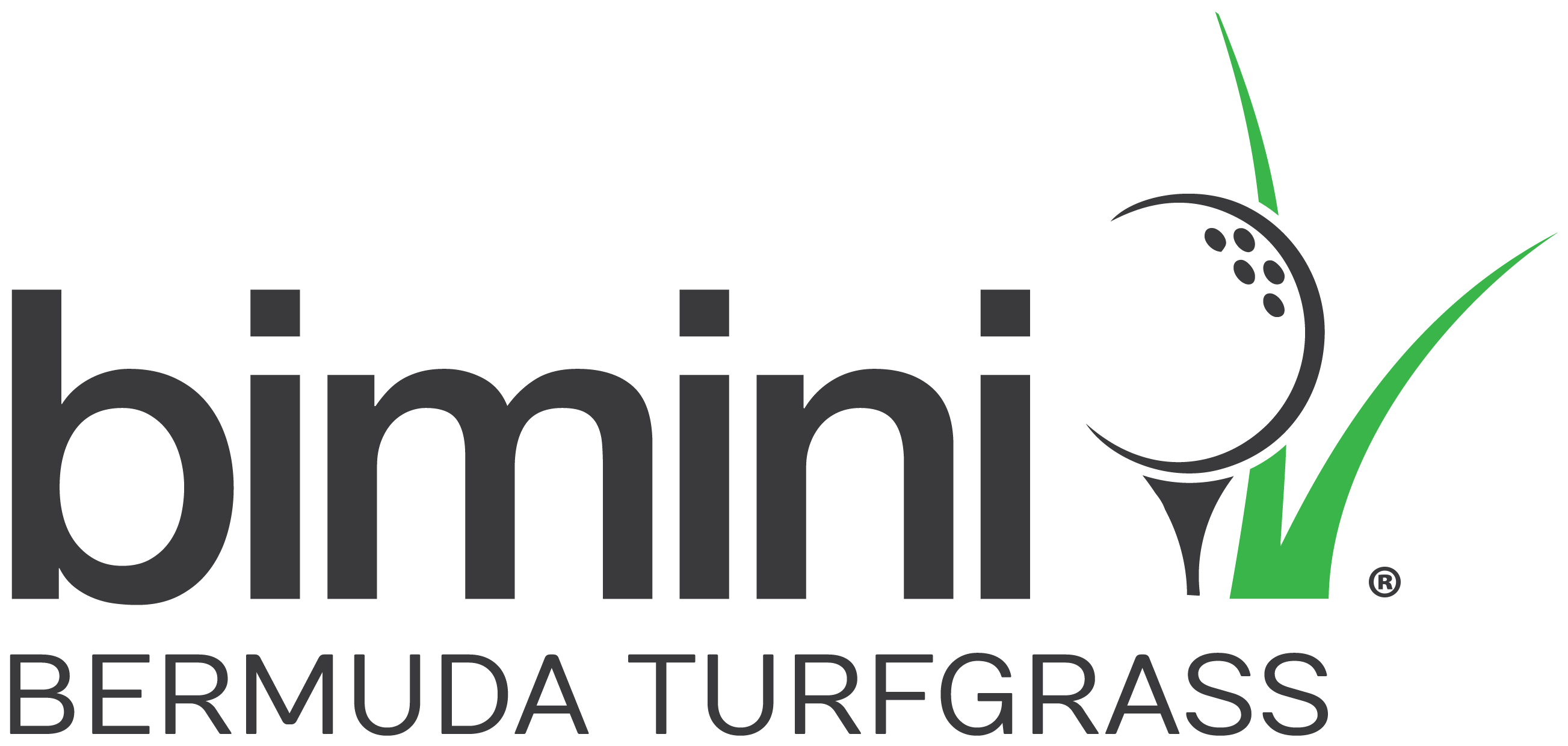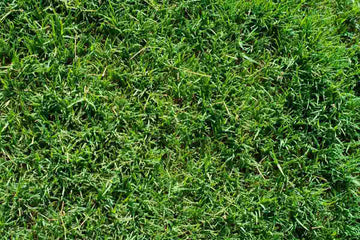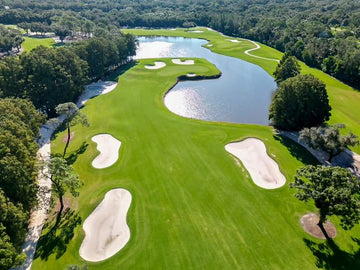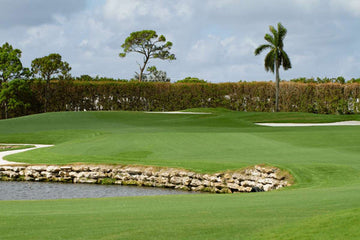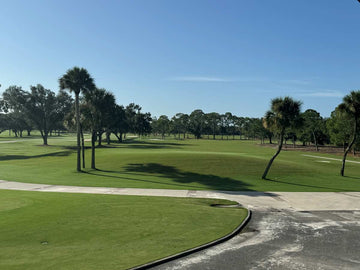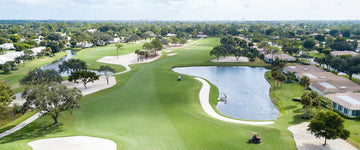
The world of golf is a renowned worldwide sport. But what type of grass do they actually use on the courses? What kind of grass is found at the best golf courses and how can you have the same kind? That's what this blog post will answer for you!
What Does the Grass on Golf Courses Actually Look Like?
The grass on golf courses is a very fine, closely cropped surface. It is usually deep green in color and is kept meticulously clean and free of clipping debris. The blades of grass are cut to an even length, creating a smooth surface that is ideal for playing golf.
Why Golf Courses Use Grass, Not Turf
There are a few reasons golf courses use grass, not turf. For one, grass is a natural ground cover that helps protect the soil from erosion. It also provides a softer surface for players to walk on, which can help reduce injuries. Additionally, grass helps to regulate temperatures on the course, keeping it cooler in the summer and warmer in the winter. Finally, grass just looks better than turf!
What is Bermuda Grass?
Bermuda grass is a type of warm-season grass that is commonly used on golf courses. It is known for its ability to tolerate and recover quickly from damage, such as heavy foot traffic and divots. Bermuda grass is also relatively drought-tolerant, which makes it a good choice for areas that receive little rainfall. It is also tolerant of salt and can be found growing along roadsides, in fields, and on beaches.
The first time bermudagrass was used for golf courses was in the early 1900s. Bermuda grass is a warm-season grass that is native to Africa and the Mediterranean region. It was introduced to the United States in the late 1600s.
Other Types of Grasses on a Golf Course
Different types of grass have different effects on golf balls. Some grasses make the ball travel further, while others make it spin more. Here is a quick guide to the pros and cons of different kinds of grass:
Bentgrass: This grass is found on most golf courses in the United States. It has a fine texture and grows close to the ground, making it ideal for putting greens. The downside of bentgrass is that it doesn’t tolerate drought very well and can be easily damaged by foot traffic. Bentgrass is also susceptible to disease and requires a lot of maintenance.
Bluegrass: Bluegrass has a coarser texture than bentgrass and grows taller. It is often used on tee boxes and fairways because it is more tolerant of drought and wear-and-tear. However, bluegrass can be difficult to control and may require more maintenance than other types of grass.
Ryegrass: Ryegrass is a versatile type of grass that can be used on both tee boxes and greens. It has a fine texture and grows quickly, making it ideal for repairing damaged areas of the course. Ryegrass is also relatively resistant to disease, but it can be invasive if not properly managed.
Fescue: Fescue is a type of grass that is often used on roughs or areas where turfgrass isn’t required to be perfect. It has a coarse texture and deep roots, making it tolerant of drought and able to withstand heavy traffic. The course texture is different than other golf course grasses, making it difficult to putt on.
What is the Best Bermuda Grass?
There are many great sport grasses with different attributes, Bimini® Bermuda is America’s most resilient sports grass. It is ranked #1 in Turf Quality amongst commercially available cultivars. Learn more about this standout Bermuda grass:
Wear Tolerance
Rhizomes in the root system allow Bimini® to quickly recover from divots and damage. Bimini®’s wear tolerance extends to high traffic areas, where golfers and carts are often going across the grass.
Consistency
You can count on Bimini® to hold its beautiful color and texture across a 70-acre golf course. From the first hole to the last, Bimini® remains the same. Bimini® is slow to go dormant in the winter and greens up early in the spring, so you’ll have more days with a beautiful green landscape.
Density & Playability
Bimini®’s density provides great support for a golf ball to rest on top of, making it easier for golfers to perform well.
Bimini® Bermuda is great on a fairway as well as residential communities. Bimini® is grown in five states throughout America’s southeast, and California. The benefits of Bimini® Bermuda has made it the most sought-after Bermuda grass in the southeast United States. Learn more online here.
How Do They Maintain the Grass on A Golf Course?
There are a few things that go into maintaining the grass on a golf course. For one, the grass is mowed regularly using specialized equipment. The height of the grass is important for both aesthetic and gameplay purposes. Here are some tips for mowing bermudagrass on a golf course:
- The ideal mowing height for bermudagrass is between 1/2 inch and 3/4 inch. Mowing the grass too short can damage the blades and lead to thatch build-up.
- Use a sharp mower blade to get a clean cut on the grass blades. A dull blade will tear the blades and create an uneven surface.
- Make sure to remove any debris from the mower before beginning to mow. This will help prevent clumping and ensure a clean cut.
- Start by mowing around the perimeter of the golf course, then move inward in a back-and-forth pattern. Be careful not to overlap your passes to avoid missing spots.
- After you finish mowing, use a rake or blower to remove any clippings from the greens or fairways. Leaving clippings on the grass can lead to disease or pest problems.
In addition to mowing, the greenkeepers also use things like topdressing, aeration, and other treatments to keep the grass healthy. Topdressing is when a thin layer of sand or other material is applied to the surface of the green. Aeration is when small holes are made in the ground to help air and water reach the roots of the grass. Other treatments include processes used to control pests and diseases.
All of these practices work together to create greens that are not only beautiful, but also function well for golfers.
Can Bermuda grass thrive in a home lawn?
Bermuda is a great option for homeowners. A lawn is often a gathering place for family and friends, Bermuda grass will withstand the traffic that comes with family barbeques and kids playing. The maintenance for a home lawn is not as intense as it would be on a golf course, but you can utilize the same tips to maintain your Bermuda lawn. You will be the envy of the neighborhood with your stunning deep green, soft Bermuda lawn!
When it comes to the grass on golf courses, there are many different options available. Each type of grass has its own set of pros and cons that should be considered before making a decision. Bermuda grass can be found across the country on golf courses and residential communities. If you are interested in Bimini® Bermuda, learn more here.
